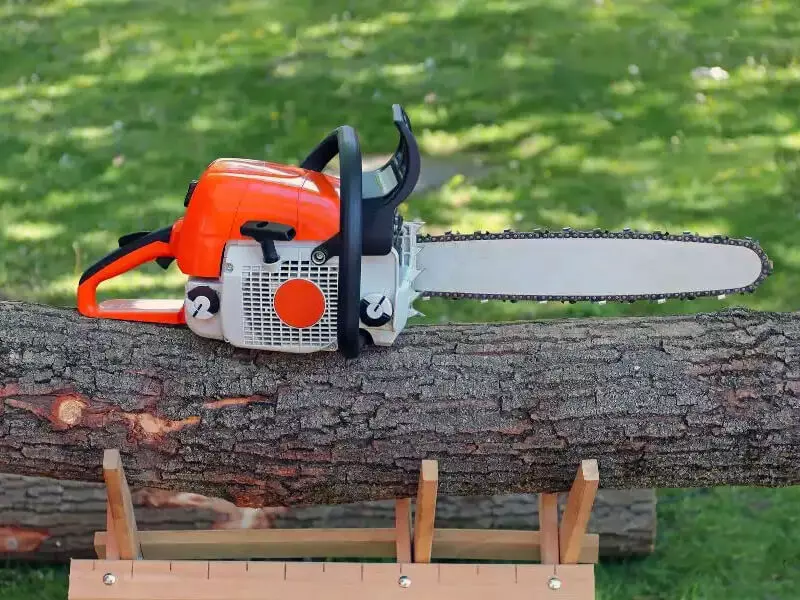27Jan 2024
table of contents

In forestry, construction, residential gardening fields, chainsaws have become an essential tool. Able to complete wood cutting tasks quickly and efficiently. At the heart of chainsa are their engines, with two main models dominating the market: two stroke and four stroke engines. Their significant differences in structure, functionality, and output between the two, often make it a challenge for potential users to choose.
BISON is committed to providing a comprehensive comparison between two stroke and four stroke chainsaws, to guide you in choosing the right chainsaw for your needs. Whether you're a professional lumberjack, home improvement enthusiast, or someone considering imported chainsaw for the first time, we encourage you to keep reading. By the end of this article, you will have gained valuable knowledge, which enable you to make an informed choice by understanding the unique advantages and trade-offs of each chainsaw type.
The heart of a two stroke chainsaw is its engine, which accomplishes a power cycle in two movements or "strokes" (one upward and one downward) during a single turn of the crankshaft. The mechanism behind it is fairly straightforward. As engine piston nears the apex of the cylinder, the compressed fuel-air mixture ignites. This controlled detonation propels the piston downward, bringing the operation to completion. On return, the piston clears the exhaust gases and reloads the fuel-air mixture, ready for the next cycle. The simplicity of this dual motion contributes to its light weight, compact size, and high power output relative to the engine size, making it a top choice for heavy-duty cutting tasks.
However, moving quickly comes at a cost. Two stroke chainsaws generally have higher fuel consumption than four stroke chainsaws. This is because Two stroke engines disperse the fuel-air mixture with each cycle, causing some unburned fuel to escape through the exhaust pipe, resulting in increased consumption.
Additionally, Two stroke engines use fuel mixed with oil. This is often called the fuel mixture. This ratio can vary widely depending on the specific model and manufacturer's guidelines, but is usually between 50:1 and 40:1. This oil is essential in providing necessary lubrication to the engine's internal components, as four stroke engines do not have separate oil passages.
Next, let’s look at four stroke chainsaws.

when diving deeper into of four-stroke chainsaws, you will find that the characteristic element is that their engines carry out the power cycle in four distinct steps: intake, compression, combustion, and exhaust. Each phase transpires within the confines of the engine cylinder, but each applies pressure at a different point in the rotation of the crankshaft. The first stroke, the intake, draws the air-fuel mixture into the combustion chamber. Compression is the second stroke that compresses the fuel-air mixture in preparation for power stroke combustion, in which a spark ignites the mixture, forcefully pushing the piston downward. The final stroke, exhaust, eliminates waste gases and makes room for the next cycle. This methodical process is precise, systematic, and ensures optimal fuel utilization, making the four stroke chainsaw suitable for long, stable jobs.
When it comes to fuel consumption, four stroke chainsaws have clear advantages. Their meticulous combustion process utilizes virtually all of the fuel-air mixture for power, minimizing waste. This results in less frequent refueling compared to Two stroke engines, ultimately increasing operational efficiency and cost savings in the long run.
Unlike Two stroke chainsaws, four stroke engines do not require fuel mixing. Instead, they run directly on gasoline and rely on a separate tank for lubrication. An independent oil system ensures consistent and controlled lubrication of the engine, reducing wear.
You probably already have a clear idea of the two different types of chainsaws mentioned above. Now let us clearly check the differences between these two types.
The difference between Two stroke chainsaws and four stroke chainsaws
| Two stroke chainsaw | Four stroke chainsaw |
| Less efficient (Uses more fuel) | More fuel-efficient |
| Generally louder | Quieter |
| Higher vibration | Lower vibration |
| Lighter | Heavier |
| Can be used in any position | Typically used in a fixed position |
| High emissions, contributes to air pollution | Reduced emissions, better for the environment |
| Easier yet more frequent maintenance | More complex maintenance but less frequent servicing needed |
Having explored differences between 2 stroke and 4 stroke chainsaws, we now move to crucial question: Which chainsaw should you select?
The decision of choosing between two chainsaw isn't straightforward. It heavily depends on your unique situation, requirements, and inclinations. Let's break down these considerations:
Intended use: Consider the tasks you will primarily use the chainsaw for. If you anticipate regularly performing demanding tasks that necessitate a high power-to-weight ratio and user-friendliness, such as bringing down large trees or trimming elevated branches, a two-stroke chainsaw might be your best bet. On the contrary, if your intended projects are lengthier and more stable, mostly involving horizontal tasks like cutting firewood, you may appreciate the fuel economy and reduced vibration that four-stroke chainsaws offer.
Budget: Cost comparisons involve more than just the initial purchase price; keep in mind operating and maintenance costs as well. Although 2 stroke chainsaws initial cost is lower, long term high fuel consumption and greater need for regular maintenance, which may lead to greater outlays. 4 stroke chainsaws may require more initial investment at begin, but because of their superior fuel efficiency and less maintenance requirements, they can save money in the long run.
Environmental awareness: This consideration is also crucial given growing awareness of environmental impacts. If you need to prioritize environment, four-stroke chainsaws should be your first choice, as they produce lower emissions and consume less fuel. They are typically more environmentally friendly due to their lower emission levels and reduced fuel consumption.
Maintenance preferences: If simplicity and ease of maintenance are important factors to you, a Two stroke engine may be attractive due to its fewer moving parts and simple design. Conversely, if you can handle more complex routine maintenance and want less frequent intervention, a four stroke chainsaw will be more suitable.
In addition to these four basic factors, we also recommend considering noise tolerances and local regulations. Some areas have noise control laws, in which case a quieter four stroke may be more suitable. By considering these key factors, you can clarify what is important to you, making the chainsaw selection process a breeze.

In sum, each type of chainsaw brings distinctive benefits and conveniences to the table. Two stroke chainsaws often shine with their superior power-to-weight ratio, lighter handling, and simpler maintenance routines. Conversely, four stroke chainsaws distinguish themselves with better fuel efficiency, reduced noise and vibration, and a more eco-friendly design thanks to lower emission levels.
But note that the decision to choose between the two depends on more than just comparing their advtanges and disadvatnges. Other considerations include intended use, budget, local regulations, and maintenance preferences etc.
Now that you have this important knowledge in hand, it's time to make an informed decision! It is worth noting that the BISON chainsaw offers a wide selection of two and four stroke models. BISON chainsaws meet a wide range of needs with their exceptional performance, durability and versatility. Explore our range, contact us - BISON is here to make sure your chainsaw choice meets and exceeds your expectations. If it's about chainsaws, it's got to be BISON!
inquiry form here
BISON BLOG, All the latest news and views from Bison Machinery.